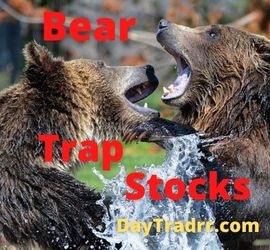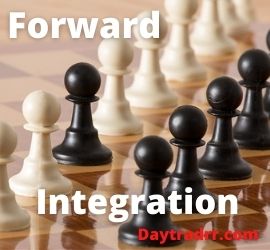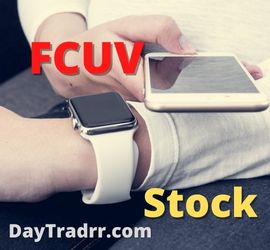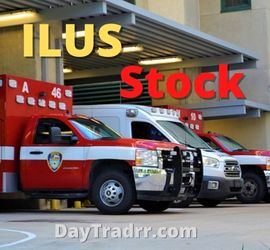What Is a Centralized Market?
 A centralized market is a system where orders are routed to a clearinghouse and buyers and sellers transact with the exchange and not each other. In finance, a centralized market is a financial network in which all orders are channeled to a single central exchange. Generally, there are no other competing markets. The quoted prices of the different assets listed on the exchange are the only prices accessible to investors looking to buy or sell a particular asset. In other words, a centralized financial market does not have any competitive parties or other markets. It is centralized in such a way that all orders to buy and sell are routed to a central exchange. Traders in this form of financial market rely solely on the prices of securities quoted by the market or exchange.
A centralized market is a system where orders are routed to a clearinghouse and buyers and sellers transact with the exchange and not each other. In finance, a centralized market is a financial network in which all orders are channeled to a single central exchange. Generally, there are no other competing markets. The quoted prices of the different assets listed on the exchange are the only prices accessible to investors looking to buy or sell a particular asset. In other words, a centralized financial market does not have any competitive parties or other markets. It is centralized in such a way that all orders to buy and sell are routed to a central exchange. Traders in this form of financial market rely solely on the prices of securities quoted by the market or exchange.
One important feature of a centralized market is that pricing is entirely transparent and visible to everyone. Another important component in regulated markets is the establishment of a clearinghouse. This function mediates between buyers and sellers to ensure that transactions are fair and accurate. This function is necessary because both buyers and sellers are interacting with the exchange rather than with one another.
Centralized Market – The Stock Market
The stock market is the common venue where investors exchange equity assets such as common and preferred stocks as well as derivatives such as options and futures. Stock exchanges are where these stocks are bought and sold. Purchasing equity securities and stocks results in a relatively modest ownership position in a corporation. While bondholders lend money with interest, equity investors buy minor holdings in corporations. The expectation is that the company will perform well and the value of the acquired shares will rise.
The stock market’s fundamental purpose is to bring buyers and sellers together. They do this by providing a fair, regulated, and controlled environment where traders may execute their deals. Ultimately, those involved have the confidence that trading is done with transparency, and that pricing is fair and honest. The regulated environment benefits both the investors as well as the companies whose securities are traded.
Decentralized Market – The Bond Market
The bond market is where investors buy and sell debt instruments, most notably bonds issued by businesses or governments. The bond market is often referred to as the debt or credit market. Bond market securities are all different types of debt. When you purchase a bond, credit, or debt security, you are lending money for a specified length of time. Additionally, you are also charging interest, much like a bank does to its borrowers.
The bond market lacks a centralized trading place. Bonds are mostly sold over the counter (OTC). As a result, private investors seldom participate in the bond market. Participants are large institutional investors such as pension funds, foundations, and endowments. Also, investment banks, hedge funds, and asset management businesses take part in the debt market. Individual investors interested in bonds can do so through a bond fund managed by an asset manager. Many brokerages now provide direct access to corporate bond offerings, Treasuries, municipal bonds, and CDs for individual investors.
The primary market is where new securities are listed for sale. The secondary market is where investors purchase and sell assets they already possess. Bonds, bills, and notes are examples of fixed-income instruments. Issuers can receive the cash they need for projects or other costs by selling these securities on the bond market.
Decentralized Exchanges – Cryptocurrency
Decentralized exchanges, or DEXs, are peer-to-peer markets. This is where cryptocurrency traders conduct transactions without entrusting their assets to an intermediary or custodian. These transactions are enabled by the use of smart contracts, which are self-executing agreements written in computer code.
Users of decentralized exchanges can trade directly from their wallets. They engage with the smart contracts that power the trading platform. Traders are accountable for their funds and are liable for their losses if they make mistakes. For example, losing their private keys or transferring cash to the incorrect locations. Customers’ deposited monies or assets are issued an “I owe you” (IOU) through decentralized exchange portals. These are freely exchanged on the network. An IOU is a blockchain-based token with the same monetary value as the underlying asset.
Decentralized exchanges are built on top of blockchain networks. They support smart contracts and provide wallet space where users keep custody of their funds. Every trade incurs a transaction fee along with the trading fee. Simply put, traders interact with smart contracts on the blockchain to use DEXs. There are three main types of decentralized exchanges:
- Automated market makers
- Order books DEXs
- DEX aggregators.
All three allow users to trade directly with each other through their smart contracts. The first decentralized exchanges used the same type of order books, similar to centralized exchanges.
The Emergence of Decentralized Markets
Decentralized markets are expanding in tandem with the advancement of computer technology. This allows consumers to engage in online trade without requiring a centralized market. Rather, a website serves as a central meeting point for buyers and sellers. This new type of decentralized marketplace connects buyers and sellers directly to each other to trade. This concept is achieved by using a computer to execute a peer-to-peer trading application. Additionally, virtual money is also becoming an essential component of new decentralized markets.
Centralized Market and Decentralized Market Examples
- Centralized market – The New York Stock Exchange is considered a centralized market. All orders are routed to the exchange and then matched with an offsetting order. The NYSE is structured such that all orders, whether buy or sell orders, are routed via a single exchange. Also, there is no other competitive market for the specific financial instruments traded there. Security prices are accessible through and quoted by the exchange. These are the sole prices available to investors looking to purchase or sell the specific assets listed on the exchange.
- Decentralized market – The foreign exchange market (Forex, FX, or currency market) is not considered to be centralized. Forex is a global decentralized or over-the-counter (OTC) market for trading currencies. There is no single site where currency trades are transacted. Therefore, traders may obtain competing prices from multiple dealers all over the world.
Up Next: What Is a Bear Trap Stock When Trading & Investing?
 A bear trap stock is a downward share price that lures investors to sell short but then sharply reverses with the price moving positively. In general, a bear trap is a technical trading pattern. It happens when the price movement of a stock, index, or other financial instruments wrongly suggests a trend reversal from an upward to a downward trend. Many analysts believe large institutional traders set bear traps. They sell assets until other traders are convinced that the rising trend has finished and prices will fall. As prices continue to fall, traders will be duped into assuming that the downward trend will continue and short the stock or security.
A bear trap stock is a downward share price that lures investors to sell short but then sharply reverses with the price moving positively. In general, a bear trap is a technical trading pattern. It happens when the price movement of a stock, index, or other financial instruments wrongly suggests a trend reversal from an upward to a downward trend. Many analysts believe large institutional traders set bear traps. They sell assets until other traders are convinced that the rising trend has finished and prices will fall. As prices continue to fall, traders will be duped into assuming that the downward trend will continue and short the stock or security.
The bear trap is then activated, the market recovers, and prices rise. It is this deceptive trading signal that causes the short sellers to lose money. If the institutional traders are successful, the price quickly rises again. This allows the institutional traders to dump greater amounts of stock, which would otherwise drive prices significantly lower.




